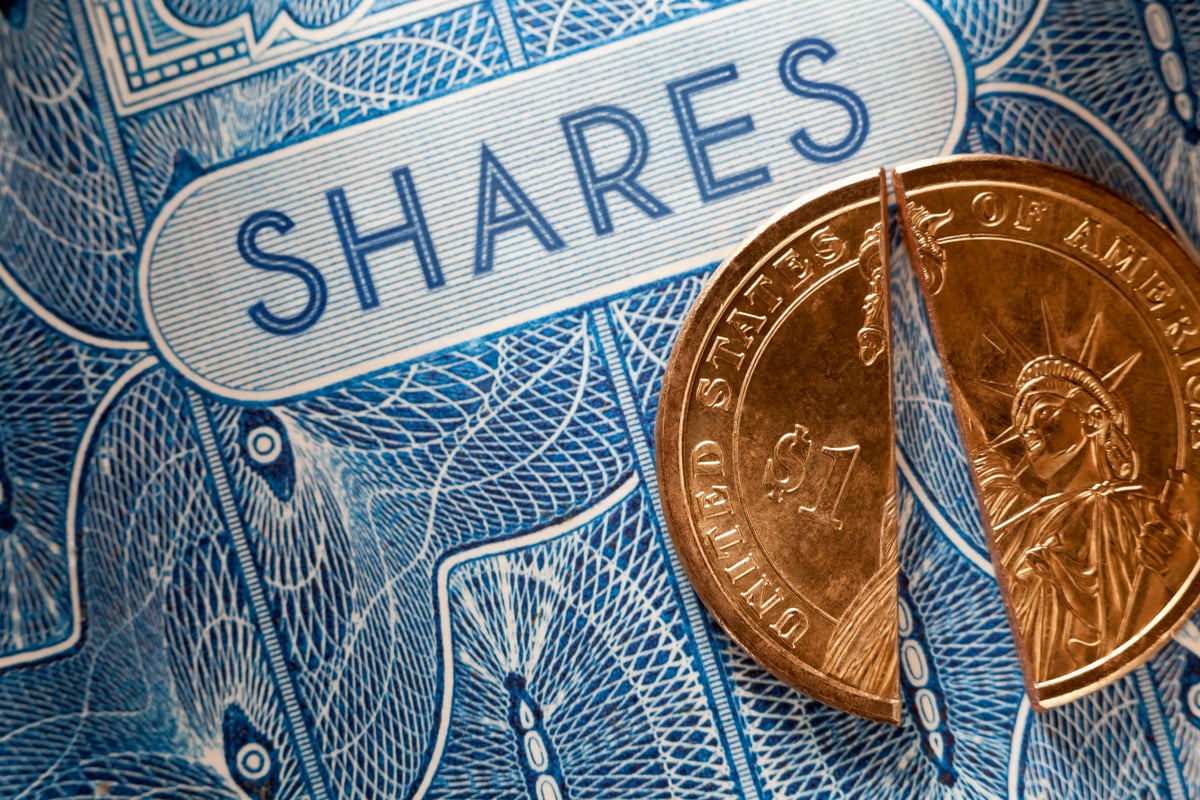When you read about various people getting rich by investing in the stock market, it's perhaps natural to imagine that they had an easy time of it. Invest in stocks, wait a while, and get rich. It kind of does happen like that, but it's important to understand that the stock market doesn't go up in a straight line. It's a zig-zaggy line, with small and large swoons and surges throughout.
Such stock market volatility -- and an occasional bear market -- is inevitable if you're going to invest in the stock market for a long time. (And a long time is what most people need to amass significant wealth through stocks.) Here's a look at how long bear markets have lasted in the past, along with other relevant information.

Image source: Getty Images.
What's a bear market?
First, let's define our terms. If the stock market falls by between approximately 10% and 20%, that's generally referred to as a correction. If it falls by 20% or more, that's considered a stock market crash.
This is where bear markets enter the picture. If the stock market has been heading south for around two months or longer and has fallen by at least 20%, you've got a bear market. (Prolonged periods of generally rising stocks are called bull markets.)
Bear markets can be triggered in a variety of ways. They're often tied to a drop in consumer confidence, which has fallen in recent years due to factors such as the bursting of a bull market's bubble, a recession, the global COVID-19 pandemic, and the subprime mortgage crisis.
Global economic instability can also trigger a bear market, and recent tariff wars have certainly boosted uncertainty. Interestingly, a Reuters report in late May noted that "U.S. consumer confidence improved in May after deteriorating for five straight months amid a truce in the trade war between Washington and China, though households continued to worry about tariffs raising prices and hurting the economy." Despite all this, we are not currently in a bear market.
How long do bear markets last?
As stock investors, it's good to understand how long bear markets last. There's no standard length, of course, and stock market history features some very long and very short bear markets. Here are some things to know:
- The average length of a bear market since 1928 has been 11.4 months, per Yardeni Research.
- The stock market has lost about 35%, on average, in bear markets, according to Hartford Funds, while bull markets have averaged gains of 111%.
- A bear market ends when there's a prolonged upswing, and Yardeni's data show that a full recovery, with the stock market returning to its previous peak, takes an average of 2.5 years.
- Those are just averages, though. The shortest bear market happened in 2020, due to the pandemic, when the S&P 500 cratered by more than 30% in only 33 trading days -- and it fully recovered within four months.
- One of the longest bear markets for the S&P 500 is measured from a peak in March of 2000, when the "internet bubble" burst. The S&P 500 dropped by 49% and took 31 months to recover, or about 2.6 years. (Go back to the early 1900s and the 1800s, and you'll find some even longer ones.)
- Since the 1800s, the market has taken an average of about 4.5 years to recover from a bear market. That's the average, though, which incorporates a few very big numbers. The median time for a recovery is 2.4 years. (The median is the middle value if you were to rank all the durations by length.)
- Bear markets happen, on average, roughly every 3.5 years.
How should you deal with bear markets?
First off, since market downturns can occur at any time, be sure that the only money you park in stocks is money you won't need for at least five years, if not 10. You don't want to have to sell when the market is down.
Otherwise, think twice before selling after a crash. Remember that money is made by buying low and selling high, so it's often unwise to sell after a market drop. Hartford Funds notes:
About 42% of the S&P 500 Index's strongest days in the last 20 years occurred during a bear market. Another 36% of the market's best days took place in the first two months of a bull market -- before it was clear a bull market had begun. In other words, the best way to weather a downturn could be to stay invested since it's difficult to time the market's recovery.
Remember, too, that big market downturns tend to produce big opportunities in the form of great stocks with temporarily depressed prices. Bear markets can be terrific times to keep adding to your long-term stock portfolio.





